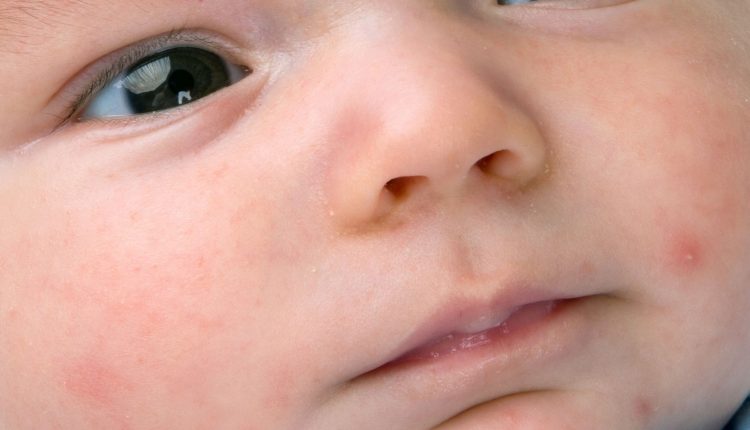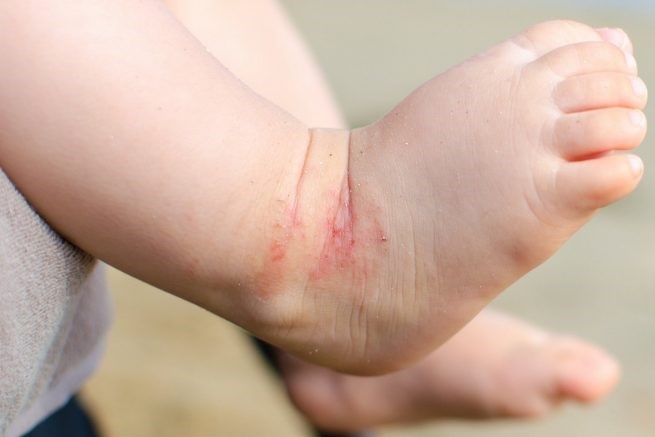
Transient neonatal dermatosis? Don't worry, here's what they are
Transient neonatal dermatosis refer to a group of skin manifestations that appear within the first month of life and resolve on their own. They usually do not require treatment
Transient neonatal dermatosis are a group of skin manifestations, not all of which are true diseases
They usually appear within the first month of life and disappear spontaneously.
Normal skin manifestations are for instance caseous varnish, lanugo and jaundice.
They are benign and disappear on their own.
Other transitory dermatoses may be mongol spots, seborrhoeic dermatitis and miliaria.
They too tend to resolve spontaneously.
Treatment of transient dermatoses is only symptomatic based on emollients/moisturisers.
Antibiotics or cortisone and antihistamine creams and ointments are very rarely prescribed for itching.
CHILD HEALTH: LEARN MORE ABOUT MEDICHILD BY VISITING THE BOOTH AT EMERGENCY EXPO
WHAT ARE TRANSIENT NEONATAL DERMATOSES?
Transient neonatal dermatoses are a group of skin manifestations that usually appear within the first month of life and resolve spontaneously.
These manifestations are not always present at birth, i.e. they do not necessarily affect all newborns. However, it seems appropriate to inform mothers – especially new mothers – of the possibility that their baby may not even be born with clear skin.
This, however, is not to be considered a serious or permanent illness.
They can be divided into two groups: non-pathological skin manifestations (they disappear on their own and do not require treatment) and transient dermatoses proper.
The non-pathological skin manifestations are:
- Caseous varnish;
- Lanugo;
- Jaundice;
- Vasomotor disturbances (peripheral cyanosis, marbling, marbled cutis);
- Desquamation;
- Hypertrophy of the mammary glands;
- Genital hypertrophy;
- Sucking bubbles.
The caseous varnish present at birth on the skin of all newborns consists of a white-greyish or yellowish secretion produced by the sebaceous glands and cellular debris.
It is localised all over the body and thickens most at the axillary and inguinal folds.
It disappears on its own and therefore requires no treatment.
Lanugo is always present at birth, consisting of long, fine hairs localised on the back, shoulders and face.
It generally disappears spontaneously during the first week of life and is replaced by terminal hairs.
Physiological jaundice occurs during the first week of life in about 60% of term infants and in about 80% of premature babies
It is caused by an accumulation of bilirubin in the blood, which in turn is caused by the immaturity of the infant’s liver and circulatory system.
Transient physiological jaundice appears between the second and third day of life and resolves spontaneously in a little over a week.
Sometimes it is necessary to resort to phototherapy (exposure of the infant to ultraviolet lamps) to accelerate the elimination of excess bilirubin.
These dermatoses are rightly called transitory, precisely because they do not require any treatment.
Their regression is generally spontaneous without leaving any scars on the baby’s skin.
Transient dermatoses proper are a group of cutaneous manifestations that require careful diagnosis because some of them can be confused with real diseases that are not only cutaneous, but also systemic, i.e. involving numerous organs and apparatuses.
They are:
- Mongolian spots;
- Miliaria;
- Milia;
- Hyperplasia of the sebaceous glands;
- Seborrheic dermatitis;
- Acne neonatorum;
- Toxic erythema of the newborn;
- Transient pustulosis of the newborn;
- Acropustulosis infantum;
- Eosinophilic pustular folliculitis;
- Steatonecrosis of the newborn.
Mongolian spots are present from birth or in the first months of life; they consist of single or multiple spots, 1 to 10 cm in diameter, of a slate-grey or bluish colour.
They are usually located in the sacral region, i.e. between the bottom of the back and the root of the buttocks, but can also be found on the limbs, trunk and rarely the face.
They are more frequent in Asians and tend to disappear in the first decade of life.
Not to be confused with blue nevi, which instead require periodic check-ups or, sometimes, preventive surgical removal.
M miliaria are due to obstruction of the intraepidermal tract of the duct of the endocrine glands: exposure to the hot-humid climate favours the appearance of this manifestation.
M miliaria appear between the first and second week of life and are characterised by erythematous (red or whitish) blisters on the face, trunk and skin folds.
Healing is spontaneous.
However, it is advisable to bathe frequently with a mild detergent and to have the baby wear pure cotton clothes.
It is also necessary to avoid making the clothing heavy.
Milia are small white or yellowish papules consisting of follicular epidermal cysts generally located on the face and sometimes on the trunk.
These lesions resolve on their own within the first few weeks of life.
Seborrhoeic dermatitis (DS – commonly and inappropriately referred to as milk crust) is a fairly frequent manifestation that generally appears towards the end of the first month of life.
It is characterised by reddened lesions covered with yellowish-white scales localised on the scalp, forehead, eyebrow arches and skin folds.
Acne neonatorum is a very frequent dermatosis present at birth or occurring in the first few weeks of life.
It is more frequent in boys.
It appears to be due to maternal hormones and testicular activity of the newborn itself.
It consists of an eruption similar to juvenile acne.
It heals on its own within the first few months of life, although some doctors recommend the use of drugs indicated against acne.
It is not caused by nutrition.
Toxic erythema of the newborn appears in the first few days of life, rarely at birth, and consists of erythematous macules (red patches) with small punctiform pustules in the centre.
The patches are localised mainly on the trunk, but also on the limbs and face.
This manifestation heals by itself within a few days, although it may reappear up to the sixth week of life.
In this case it is necessary to exclude all other pustulosis of the newborn, as some require a medical examination and specific treatment, such as neonatal candidiasis or neonatal herpes.
Transient neonatal pustulosis, infantile acropustulosis and eosinophilic pustular folliculitis are dermatoses characterised by diffuse superficial pustules that are more or less itchy with similar features.
They require a careful medical examination, check-ups and sometimes even a skin biopsy for diagnosis.
They all generally regress spontaneously without leaving scars, except for eosinophilic folliculitis, which needs treatment for intense itching.
Steatonecrosis of the newborn appears in the first month of life and is characterised by single or multiple subcutaneous nodules, isolated or confluent in plaques and surmounted by reddened or bluish skin.
Symmetrically distributed on the buttocks, upper trunk, shoulders, cheeks and arms, they may be associated with hypercalcaemia.
The cause of this manifestation is unknown.
Factors predisposing to this condition are:
- Maternal diabetes;
- Obstetric trauma;
- Neonatal hypoxia
- Hypothermia.
It resolves spontaneously within a few months, leaving no scars.
The diagnosis is made during the medical examination.
It is always necessary to gather information on the history of the baby and his family and to assess the general condition of the newborn during the medical examination, also paying attention to other symptoms.
Do not overlook serious infectious diseases that may have similar symptoms to this group of manifestations.
In doubtful cases, referral should be made to a specialist who will sometimes have to perform specific examinations such as cytological examination, culture examination or biopsy.
Treatment: transient dermatoses, as we have said, resolve on their own
Therefore, therapy only serves to relieve the symptoms through the use of emollient and moisturising creams, rarely antibiotics or cortisone for local use (creams, ointments or lotions).
The doctor may in some cases prescribe antihistamines in case of itching.
It is important to prevent complications such as impetigo, i.e. the bacterial infection caused by scratching or wearing heavy or woollen clothes in contact with the baby’s skin.
Read Also:
Emergency Live Even More…Live: Download The New Free App Of Your Newspaper For IOS And Android
Eczema Or Cold Dermatitis: Here’s What To Do
Psoriasis, An Ageless Skin Disease
SkinNeutrAll®: Checkmate For Skin-Damaging And Flammable Substances
Healing Wounds And Perfusion Oximeter, New Skin-Like Sensor Can Map Blood-Oxygen Levels
Dermatological Examination For Checking Moles: When To Do It
Allergic Contact Dermatitis And Atopic Dermatitis: The Differences




